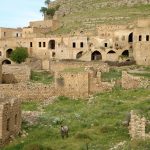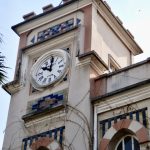Turkey’s most French city Population: 500,000
Old name: Antioch ad Orontes (Roman)
Festival: 29 June (Feast Day of St Peter)
Favourite son: St Luke
Of all the towns devastated by the twi earthquakes of February 2023 Antakya was one of the worst affected. Much of the historic centre was terribly damaged. Thousands were killed or made homeless. I have not been back to see for myself but know that several churches, the synagogue and the Habib-ı Neccar Cami were damaged as was the old Meclis building. The Archaeological Museum survived virtually unscathed as did the Church of St Peter. One hotel has since reopened but in November 2023 it was still hard to recommend visiting. Most of what follows is probably just historical now.
Backed by the rugged Amanos Mountains and with the Orontes river following through the centre, Antakya (Hatay), the capital of Hatay province, is a vibrant, colourful city with a fascinating history and cuisine. Most people come here to visit the rock-cut Church of St Peter and the superb Archaeological Museum but there’s easily enough to see in Antakya to fill a couple of days.
The most interesting section is the Ottoman French quarter beyond the lively market and down the road from the Ulu Cami. This is where you’ll find the best hotels and restaurants.
Get the bus from the otogar to drop you off at Köprübaşı, the bridge over the Orontes (Ası) river, which is within walking distance of many of the sites.
Don’t leave town without trying künefe, a sugary pastry stuffed with cheese that is a local favourite
Around town
From Köprübaşı, it’s a short walk to the French quarter which is full of fine 19th and 20th-century French-style stone mansions with shuttered windows that rub shoulders with Ottoman-style wooden houses with overhanging upper floors. Much of this neighbourhood has been beautifully restored.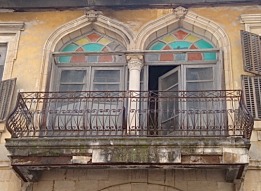
Right beside the Antik Beyazıt Hotel stands the grand Ata College, originally built between 1900 and 1908 as a private home but then used as a hotel and a teacher training college. Today it serves as a school.
Just down the road in a large garden stands a palatial building designed as the French headquarters in 1918 but now acting as the Governor’s Mansion.
Round the corner from the Governor’s Mansion is a beautiful honey-gold building originally designed as the Lebanese-Syrian Bank but now used as the Protestant Church (this was destroyed by the quakes).
On Hurriyet Caddesi, up a few steps and in a courtyard, stands the Orthodox Church that dates back to 1833 but had to be completely rebuilt after the earthquake of 1872. It was once again destroyed in 2023. The Catholic Church stands beside the Sarımıye Cami just off Kurtuluş Caddesi and close to the old synagogue.
The French quarter rubs up against Antakya’s colourful market. Bordered by İstiklal Caddesi, Kemal Paşa Caddesi and Kurtuluş Caddesi, the market is a great place to while away a few hours shopping with the locals. Look out in particular for local cheeses – the conical orange ones are tangy sürk peyniri which is flavoured with thyme, red pepper and parsley, while künefe peyniri is used specifically to make the local künefe dessert – and for colourful woven trays that look almost South American. There is even the odd saddlemaker still in business.
Deep inside the market, off Uzun Çarşı (Long Market), the picturesque old Kurşunlu Hanı (Leaded Han) dates back to the 17th century and is named after the adjoining mosque. It was here that the camel caravans laden with treasure sent by the sultans to Mecca and Medina every year would have been accommodated (the sultans’ busy schedules did not allow them time to complete the haj (pilgrimage) themselves).
With its minaret perched over the entrance gate, the Merkez Cami makes a useful landmark inside the market.

If you stand on the bridge at Köprübaşı and look across the Asi (Orontes) river you will see a curved stone building. This used to house the Gündüz Cinema but was later used as a base for the Hatay Meclis (Assembly). Today it houses a branch of the Özsut pudding shop chain. The old movie projector is preserved in the Mado café next door.
Nearby, Mado is housed inside what was the Adalı Konağı (Ada’s Mansion), designed by the French architect Jacques de la Bouchiere who named it after Ada, the woman he loved who died in his absence.
The cinema faces the main roundabout, as does the Belediye (Town Hall) that was built in 1923.
Guests at the Savon Hotel step out onto Kurtuluş (Salvation) Caddesi which runs along the site of what was once a grand 2.5km-long colonnaded Roman street dating back to the reign of Augustus (BC 30–14 AD). It is thought to have been lined with 3200 columns that were equipped with torches so that it has been called the world’s first illuminated street. In the 19th-century it underwent a renaissance that brought fine mansions with magnificent facades to the street. Several have since being restored and turned into boutique hotels, shops and restaurants.
Just off Kurtuluş Caddesi one of the old houses set round a courtyard has been turned into the Tıbbı ve Aromatik Bitkiler Müzesi (Medical and Aromatic Plant Museum). Of rather specialist interest it does, however, offer a chance to see inside one of the mansions.
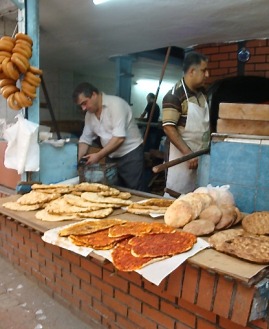
Also on Kurtuluş Caddesi is the Habib-ı Neccar Cami, interesting because it is named after a carpenter who used to make pagan images but who was an early convert to Christianity. Locals them cut off his head which rolled down hill and came to rest on this site. Originally built in 638, this is believed to have been the first mosque in Antakya. It became a church in Crusader times before reverting back to mosque status in 1268 under the Mamluks.
The suburbs
St Peter, the first Bishop of Antioch, may have preached in a rock-cut cave-church two km out of the centre of Antakya on the road to Reyhanlı. The church is believed to date back to 47 AD. Passing Crusaders added the attractive stone façade in 1093 after supposedly finding a piece of the lance that had pierced Jesus’ side on the Cross buried here. The small pool to the right of the altar was for baptisms. To the left a blocked entrance can just be made out. Some say that it once led to catacombs, others that it offered a quick escape route in times of persecution.
A very holy place, the church is a popular pilgrimage site, at its busiest during the annual festival on 29 June, St Peter’s name day.
Above the cave a carving in the rocks is said to represent Charon, the boatman of Greek mythology who ferried the dead across the river Styx to hell. It may have been carved in the second century BC when a soothsayer suggested it would help put an end to a plague that was ravaging the city. Others claim that it’s an image of the sphinx. It’s most easily seen from across the busy main road.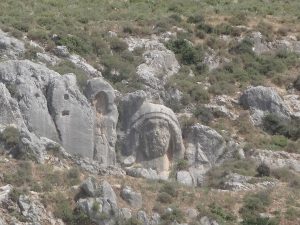
The superb new Hatay Archaeological Museum (closed Mondays) is about one km past the turn-off to the Church of St Peter on the Reyhanlı road. Hop a minibus – it’s a dreary walk.
The front part of the museum vividly tells the story of the various archaeological sites scattered around the Hatay including the one at Alalakh. It’s all very state-of-the-art and well done which makes it rather odd that the mosaic section at the back is much less imaginatively presented. For the time being only a few of the fantastic mosaics that used to be on display in the old town-centre museum are on show although there are some fine newly discovered ones.
The huge metal waterwheel in front of the museum is a reminder of the old wooden ones that used to creak alongside the Orontes.
Antakya was once surrounded by city walls studded with 360 towers but they were brought down by earlier earthquakes. Of the five original gates, only the remains of the Iron Gate still survive. The walls dated back to the sixth-century reign of Justinian but were extensively rebuilt by in the 10th century when the Byzantines reconquered the city. At this time they also built the citadel high up above the walls on Mt Silpius.
The Crusades and the double siege of Antioch. In October 1097 during the First Crusade the Crusaders finally reached Antioch which had been seized by the Selçuks in 1085. They laid siege to the city which managed to hold out until June of the following year. Once the Crusaders finally managed to enter Antioch with the help of a traitor the tables were turned on them and for three weeks in 1098 the Selçuks under Kerbogha, the ruler of Mosul, laid siege to the city in an attempt to wrestle it back from the Crusaders. Eventually the Crusaders emerged and succeeded in fighting off the Turks. Antioch then became a princedom under the Norman, Bohemund of Taranto (c.1058-1111). The Crusader principality of Antioch survived until 1268 when the Mamluk leader Baiburs won it after another short siege. Some 40,000 people are thought to have been massacred and 100,000 enslaved.
Eating and drinking
Antakya has a reputation among foodies as a place to come to tuck into dinners with a Middle Eastern tang. On my most recent visit I had an excellent meal at the Hatay Sultan Sofrası restaurant under the Mozaik Hotel.
Before the quakes cafe society had taken root in the old courtyard houses between the market and Kurtuluş Caddesi. I enjoyed the atmospheres at Lotus Cafe, Geyik and La Mistik. If you still hanker after the chain offerings you’ll find them all lurking in the Palladium shopping mall near the local bus station.
A cluster of small afes compete for the künefe trade near the Ulu Cami in the town centre. Pile on the calories while deciding which one you like best.
Sleeping
Before the quakes Antakya had a pretty good selection of accommodation although cheap places to stay were getting harder to find. Many hotels were damaged in the quakes so it would be unwise to visit without calling to check the latest situation first.
Antik Beyazıt Hotel (closed)
Büyük Antakya Hotel. Bedrooms are better than the old-fashioned ground-floor reception might suggest. Tel: 0326-213 5858
Çankaya Konakları Hotel. Tel: 0326-216 8282
Güney Hotel. Tel: 0326-214 9713
Museum Hotel Antakya. Constructed over an enormous Roman mosaic, the hotel survived the 2023 quakes but had not reopened to visitors in November of the same year.
Savon Hotel(closed)
Waxwing Hotel. Tel: 0326 215 5555 (reopened since the earthquakes)
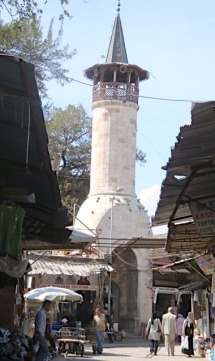 Many Antakya mosques sport witch’s-hat caps on their minaretsTransport info
Many Antakya mosques sport witch’s-hat caps on their minaretsTransport info
Air
Antakya is served by Hatay airport (HTY) which is 19km north of town in Serinyol. It was badly damaged during the quakes but has since reopened. You can also fly to Adana which is only three hours away by bus.
Bus
Antakya’s new bus station is north-west of the centre. Buses are relatively infrequent, so check schedules carefully. There are no servis buses into town. Leave the bus station, cross the road and wait for a local bus heading into the centre. To get to the otogar look for bus nos 5 or 17.
Buses to local destinations leave from a separate bus terminal just north-east of the centre along the continuation of İstiklal Caddesi. Many stop to pick up passengers at the junction of İstiklal Caddesi with Yavuz Sultan Selim Caddesi.
Only St Peter’s Church and the Hatay Archaeological Museum are not within easy walking distance of the town centre.
Taxi drivers usually insist on charging a flat fare to the bus station.
Day trip destinations
 This building once housed the Hatay Assembly
This building once housed the Hatay Assembly

